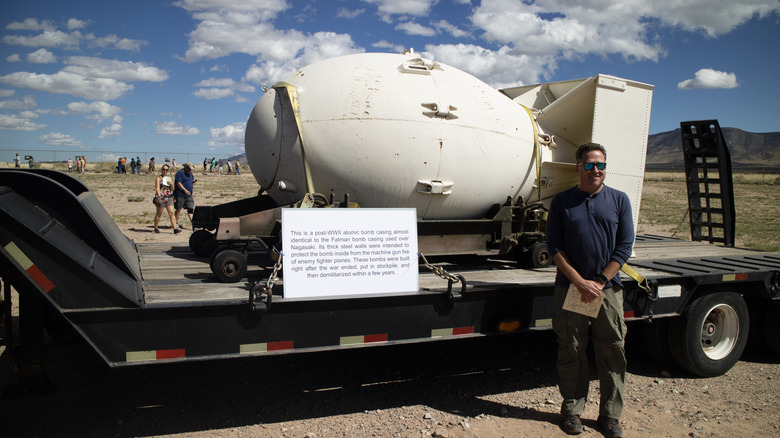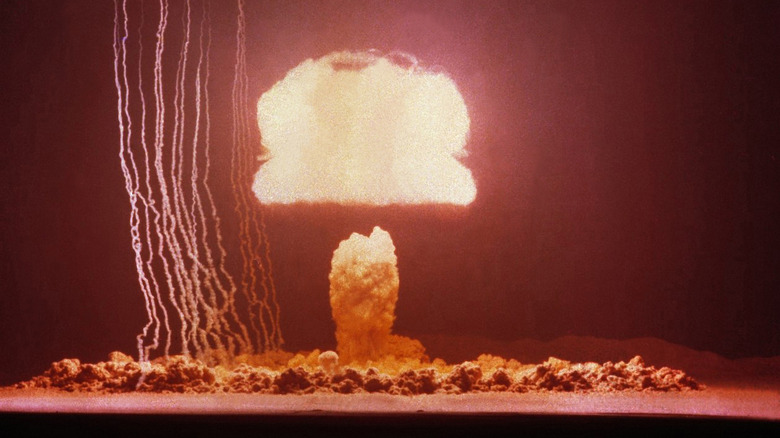What Are The Two Elements Of Nuclear Weapons?
Nuclear weapons are one of the most dangerous creations that human beings have ever come up with. Insurmountable destruction and deaths have been caused by their use, so it stands to reason that actual science behind them is incredibly complicated.
Before getting into that, a little bit of basic science should be known first. Atoms are basically the building block particles that make up everything in the universe. They are one of the smallest particles in existence, and are made up of three parts: protons, electrons, and neutrons, per Britannica. The center of an atom, the nucleus, is made up of neutrons and protons, and is the basis of nuclear energy and therefore nuclear weapons.
When an atom's nucleus is split apart, this releases an extraordinary amount of energy. That energy potential can either be used for nuclear power plants or a massive explosion, in the case of nuclear bombs (via Union of Concerned Scientists).
How nuclear fission and fusion work
Nuclear fission is an instrumental part of the nuclear energy process. Nuclear weapons utilize both nuclear fission and fusion to release massive amounts of energy in the form of an explosion. This kind of power has been used throughout history for more heinous purposes, but it also serves as the backbone for nuclear power plants as well.
The process of nuclear fission is complicated, but its explanation is fairly straightforward. The nuclei (plural of nucleus) of most atoms are generally stable, which means that their proton and neutron makeup typically doesn't change. That's where fission comes in. As explained by the Union of Concerned Scientists, fission happens when you split the nucleus into a smaller nucleus. In this process, instability and the release of excess neutrons result in an enormous amount of energy.
Fusion is basically the opposite of fission. You can fuse lightweight nuclei together under extreme conditions, such as high pressure and temperature, to become heavier nuclei. This process also releases a lot of energy. Fission bombs are like the ones used on Hiroshima and Nagasaki, which split nuclei for energy, while thermonuclear bombs use fission and fusion for energy release (via Live Science).
The process of nuclear detonation
Nuclear weapons utilize both atomic fission and fusion to release enormous amounts of energy, but how does this process actually occur? As stated by the Union of Concerned Scientists, nuclear weapons need nuclear fuel, which will often be isotopes plutonium-239 and uranium-235.
Modern atomic bombs achieve the crucial fission step by setting off sub-critical spheres made of isotopes, surrounded by chemical explosives, which cause a chain reaction. This compresses the sphere, forcing all of the atoms to come together into a highly dense center. Once critical mass is reached, neutrons are then shot in, creating fission, and thus a nuclear explosion.
Contrary to popular belief, the explosion does not come from the bomb itself hitting the ground. The actual detonation process happens midair, per Live Science. The warhead of a nuclear bomb is a large cone tip that houses the reactive material, which can then be detonated. It's hard to underestimate the sheer destruction that comes from using these weapons, and hopefully one will never have to be used again.


